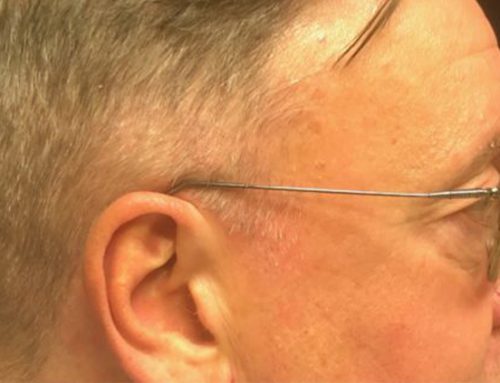The path that leads a woman to get a breast reduction is often long. The surgery is often sought after years of discomfort, and then it takes time, energy, and money to plan a procedure like this. The surgery itself takes just a couple of hours, but the recovery requires another good investment of your time and attention. To get the best possible results, the role you play in your recovery is important, especially during the first day, week, and month after surgery.
After Breast Reduction: The First Day
The day of your breast reduction surgery will also likely be the first day of your recovery at home. Done under general anesthesia, this outpatient surgery is followed by a recovery period of an hour or two. As you slowly wake up, your job is to let your nurses know about any pain or nausea, so they can insure you are as comfortable as possible.
Once you are alert enough, you will be given home instructions which may include incision care, activity restrictions, and prescription medication use. Ask as many questions as you need. Then you will be discharged into the care of whomever you have pre-arranged to take you home.
You will have bandages covering the incisions and will likely be wearing a post-operative bra that was put on after surgery. You will notice right away that, though they are a little swollen, your breasts are smaller. You probably won’t see your incisions that first day because they will be covered with gauze. Under that gauze your body will be busy starting the healing process. To help that along, your job is simply to rest.
After Breast Reduction: The First Week
Ideally you will have arranged to take the first week or two off from work and other taxing obligations, so you can continue to rest and recover. Some patients have been able to return to work after three or four days, particularly if they have desk jobs. The early post-op period is a time to eat well, drink plenty of fluids, and avoid heavy lifting and strenuous activity.
You will also be dealing with some post surgical pain during this first week. The degree of pain varies from patient to patient but remarkably most patients are pleasantly surprised that the pain is less then they were expecting. In fact most patients complain more of a “tight” feeling then severe pain. Nonetheless, it is important not to let the pain get ahead of you, especially during the first three to five days after surgery. Take your pain medications on schedule, as they can take a little while to kick in. When able, you may be able to switch to an over-the-counter pain medication as discussed with your doctor.
Take a few moments to go through the instructions given to you at your pre—operative appointment and after surgery once or twice more during this week. Make sure you understand them and don’t be afraid to call the office if you have any questions or concerns. Following doctor’s orders is the best way to ensure the best possible outcome. This may include incision care and bandaging to prevent infection, as well as specific activity restrictions. The internet is a convenient source of all kinds of post operative advice; however, this advice may not be what your surgeon wants you to do. Since the internet didn’t perform your surgery, it probably shouldn’t be taking care of you after surgery.
While you do need to rest and take precautions you should not spend this first week just staying in bed. Part of your recovery should include gentle activity, like walking, and a gradual return to self-care activities. Also, if you quit smoking before surgery, don’t give in to the temptation to start again. Smoking can get in the way of the healing process.
After Breast Reduction: The First Month
Incredible change happens this first month; your incisions will heal, and you will begin feeling like yourself again. You will also start experiencing the benefits of your breast reduction, like decreased neck and shoulder pain, better fitting clothes, and increased freedom of movement. These benefits depend largely on the reasons you went in for a breast reduction in the first place.
Enjoy these things but remember you are still in the early stages of healing, so don’t jump back into full activity too soon. Don’t hesitate to ask if you are not sure whether an activity is too rigorous. After a week or so, your surgeon will probably clear you to return to work (depending on your job requirements) and you’ll likely be driving by then as well. Near the end of the month you may be allowed to begin low-impact exercise.
It may be tempting to wear tight fitting clothes that you couldn’t before, but for now, stick to soft undergarments and looser clothing that won’t interfere with the healing at your incisions sites. Once your incisions have healed, your surgeon will also likely suggest you start using some sort of silicone-based product (cream or tape) on them. These can be very effective at reducing the appearance of scars in the long run.
During the first month after surgery your body is working hard to heal and recover from surgery. Though more subtle, this process continues as the months progress. It can take 12-18 months to see the full results of your surgery, including how your scars will look. How well you follow your doctor’s orders and take care of yourself during that time will make all the difference. It will be an investment, but you are worth it.
If you are interested in finding out if you are a candidate for a breast reduction and have questions about recovery, call our office and schedule a consultation today.





